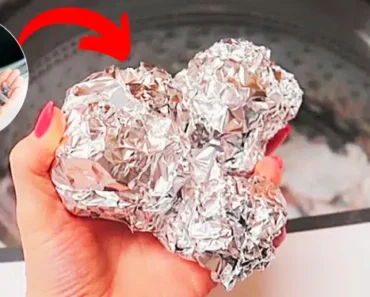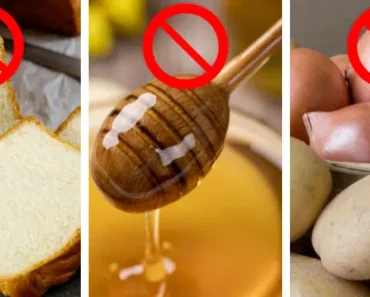Your home is meant to be a safe haven – a place where you rest, recharge, and feel protected. But what if some of the most ordinary objects in your home were silently impacting your health?
Let’s take a look at 12 everyday items that might be harming your health – and what to use instead.
1. Nonstick Cookware (Teflon and PFAS-Coated Pans)
Nonstick cookware may make cleanup easier, but it often contains PFAS (per- and polyfluoroalkyl substances) – also known as “forever chemicals.”
When heated, these coatings can release toxic fumes and compounds that build up in the body and environment.
Why it’s harmful:
PFAS have been linked to hormone disruption, thyroid problems, fertility issues, and even certain cancers. Even small exposure over time can accumulate in your bloodstream.
Healthier swap:
Use stainless steel, cast iron, or ceramic cookware instead. They’re durable, naturally nonstick when seasoned properly, and completely free of chemical coatings.
2. Scented Candles and Air Fresheners
That cozy, vanilla-scented candle may seem harmless – but many candles and plug-in air fresheners release volatile organic compounds (VOCs) and synthetic fragrances that pollute indoor air.
Why it’s harmful:
These compounds can trigger headaches, allergies, respiratory irritation, and hormone imbalance. Paraffin wax, commonly used in cheap candles, is a petroleum byproduct that releases soot and toxic fumes when burned.
Healthier swap:
Choose soy, beeswax, or coconut wax candles with cotton or wooden wicks and essential-oil-based scents. For air freshening, use essential oil diffusers or natural odor absorbers like baking soda and activated charcoal.
3. Plastic Food Containers and Bottles
Many plastics contain BPA (bisphenol A) or phthalates – chemicals that can leach into food, especially when containers are heated or scratched.
Why it’s harmful:
BPA and phthalates mimic estrogen in the body and have been linked to hormonal imbalance, reproductive issues, weight gain, and developmental problems in children.
Healthier swap:
Use glass, stainless steel, or BPA-free containers. Avoid microwaving food in plastic and replace worn-out containers regularly. Opt for filtered water in reusable bottles instead of single-use plastic ones.
4. Cleaning Products
Most commercial cleaning products – from all-purpose sprays to floor cleaners – contain ammonia, chlorine bleach, formaldehyde, and synthetic fragrances that linger in the air long after you’re done cleaning.
Why it’s harmful:
Exposure to these harsh chemicals can cause asthma, skin irritation, eye damage, and long-term respiratory issues. Some compounds even interfere with immune and hormonal systems.
Healthier swap:
Make your own DIY natural cleaners using white vinegar, baking soda, lemon juice, and essential oils. For disinfecting, hydrogen peroxide or alcohol-based sprays are effective, safe alternatives.
5. Fabric Softeners and Dryer Sheets
That “fresh laundry” scent might be masking dozens of unlisted chemical compounds. Fabric softeners and dryer sheets often contain quaternary ammonium compounds (quats) and synthetic fragrances that cling to fabrics.
Why it’s harmful:
These chemicals can cause skin allergies, breathing difficulties, and hormone disruption. They also release VOCs when heated in the dryer, adding to indoor air pollution.
Healthier swap:
Replace softeners with wool dryer balls or white vinegar in the rinse cycle – both soften clothes naturally. For scent, add a few drops of lavender or lemon essential oil to the dryer balls.
6. Carpets and Rugs
New carpets, padding, and adhesives often release formaldehyde, benzene, and styrene – chemicals known for their “new carpet smell.” These VOCs can off-gas for months or even years.
Why it’s harmful:
Long-term exposure can cause headaches, dizziness, nausea, and irritation of the eyes and throat. Some compounds are considered carcinogenic at high levels of chronic exposure.
Healthier swap:
Choose natural fiber rugs made from wool, jute, or cotton, which don’t emit harmful fumes. Air out new carpets for several days before installation, and keep your home well-ventilated.
7. Mattresses and Upholstered Furniture
Most mattresses and sofas are treated with flame retardants, stain repellents, and other chemicals that release gases and dust particles into your indoor environment.
Why it’s harmful:
Flame retardants can accumulate in the body over time and are associated with thyroid disorders, developmental problems, and reduced fertility.
Healthier swap:
When possible, choose organic cotton, latex, or wool mattresses certified by GOTS (Global Organic Textile Standard) or CertiPUR-US. Use mattress covers to limit dust exposure, and vacuum upholstery regularly with a HEPA filter.
8. Antibacterial Soaps and Hand Sanitizers
Many antibacterial soaps once contained triclosan – an ingredient banned in some countries but still found in certain imported products. Even “antibacterial” sanitizers may contain synthetic fragrances and parabens.
Why it’s harmful:
These chemicals can disrupt hormones and damage gut microbiota, weakening your natural immune defenses. Overuse may also contribute to antibiotic resistance.
Healthier swap:
Use mild, fragrance-free soaps made from natural oils (like castile soap). For sanitizing, choose alcohol-based products (60–70% ethanol) with simple ingredients.
9. Processed Air Filters and HVAC Systems
When not cleaned or replaced regularly, air filters and duct systems can accumulate dust, mold spores, bacteria, and pet dander – all of which recirculate through your home every time the HVAC runs.
Why it’s harmful:
Poor indoor air quality is linked to fatigue, headaches, asthma, and allergies. Over time, inhaling contaminated air can affect your immune system and lung function.
Healthier swap:
Replace filters every 2–3 months, or sooner if you have pets. Use HEPA-grade filters for maximum efficiency. Houseplants like peace lilies and spider plants can also help absorb airborne toxins naturally.
10. Personal Care Products (Lotions, Shampoos, and Makeup)
Your skin absorbs what you put on it – and unfortunately, many beauty products are full of parabens, sulfates, formaldehyde releasers, and synthetic dyes.
Why it’s harmful:
These ingredients can irritate skin, trigger allergies, and disrupt hormones. Some are linked to long-term health concerns, including fertility issues and breast cancer.
Healthier swap:
Look for natural, organic, or EWG-certified products made without parabens, synthetic fragrance, or phthalates. Brands using plant oils, aloe, and natural butters are safer for daily use.
11. Aluminum Cookware and Foil
Cooking with aluminum pots or wrapping food in foil can cause small amounts of metal to leach into food, especially when exposed to acids like lemon juice or tomatoes.
Why it’s harmful:
High aluminum intake is linked to oxidative stress and potential neurotoxicity. Some studies suggest long-term exposure may contribute to cognitive decline or Alzheimer’s disease.
Healthier swap:
Cook with stainless steel, cast iron, or enamel cookware. Use parchment paper instead of foil when baking, and avoid storing acidic foods in metal containers.
12. Artificial Lighting and Blue Light Exposure
Constant exposure to LED screens, smartphones, and fluorescent lighting floods your body with blue light – which disrupts melatonin production and your natural sleep cycle.
Why it’s harmful:
Over time, it can cause eye strain, headaches, insomnia, and fatigue. Poor sleep affects immunity, hormones, and mood – all key aspects of long-term health.
Healthier swap:
Use warm-toned bulbs in your home, especially in the evening. Install blue-light filters on devices, dim lights after sunset, and expose yourself to natural sunlight during the day to reset your circadian rhythm.
Why These Everyday Items Matter
Most of us spend up to 90% of our time indoors, meaning indoor air and surface exposure have a huge impact on our health.
The World Health Organization estimates that indoor air pollution can be several times worse than outdoor air due to off-gassing, synthetic materials, and cleaning fumes.
Over time, this exposure can contribute to:
- Hormonal imbalances
- Chronic fatigue
- Respiratory conditions
- Skin allergies and rashes
- Weakened immune function
The good news? Making even small swaps – like replacing candles, plastics, or cleaners – can dramatically reduce your toxic load and help your home feel fresher, cleaner, and more natural.
Simple Ways to Detox Your Home Naturally
You don’t need to overhaul everything overnight. Start with these easy, affordable changes:
- Ventilate daily. Open windows for at least 15–20 minutes to let fresh air circulate.
- Add plants. Peace lilies, spider plants, and snake plants help absorb toxins and produce oxygen.
- Ditch artificial fragrances. Replace sprays and plug-ins with essential oils.
- Go fragrance-free. Choose unscented laundry detergents and skincare.
- Vacuum often. Use a HEPA vacuum to remove dust, pet hair, and pollutants.
- Switch to glass and metal. Reduce your use of plastic storage and water bottles.
- Choose natural materials. When redecorating, opt for organic cotton, bamboo, or wool instead of synthetics.
- Filter your water. A simple carbon or reverse-osmosis filter removes chlorine and heavy metals.
By gradually replacing synthetic products with natural, low-toxin alternatives, you’ll notice cleaner air, better sleep, and fewer allergy symptoms – all signs that your environment is finally supporting your health.
Your home should heal you, not harm you. Unfortunately, many everyday products – from cookware to candles – quietly expose us to toxins, allergens, and endocrine disruptors that can affect our health over time.






